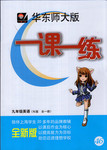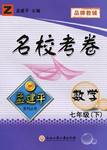题目内容
After inventing dynamites(炸药), Swedish-born Alfred Nobel became a very rich man. However, he foresaw its universally destructive powers too late. Nobel preferred not to be remembered as the inventor of dynamite, so in 1895, just two weeks before his death, he created a fund to be used for awarding prizes to people who had made worthwhile contributions to mankind. Originally there were five awards: literature, physics, chemistry, medicine, and peace. Economics was added in 1968, just sixty-seven years after the first awards ceremony.
Nobel’s original legacy of nine million dollars was invested, and the interest on this sum is used for the awards which vary from $ 30,000 to $125,000.
Every year on December 10, the anniversary of Nobel’s death, the awards (gold medal, illuminated diploma, and money) are presented to the winners. Sometimes politics plays an important role in the judges’ decision. Americans have won numerous science awards, but relatively few literature prizes.
No awards were presented from 1940 to 1942 at the beginning of World War II. Some people have won two prizes, but this is rare; others have shared their prizes.
1. What did the first award ceremony take place?
A. 1895. B. 1901. C. 1962. D. 1968.
2. The Nobel prize was established to ________.
A. honor the inventor of dynamite B. recognize worthwhile contributions to humanity
C. resolve political differences D. spend money
3. In which area have Americans received the most awards?
A. Literature. B. Economics. C. Peace. D. Science.
4. Which of the following statement is NOT true?
A. Awards vary in money value.
B. Ceremonies are held on December 10 to commemorate Nobel’s invention.
C. Politics can be of importance in selecting the winners.
D. A few individuals have won two awards.
1-4 BBDD
解析:
1. B 计算题。根据文中第一段最后一句“Economics was added in 1968, just sixty-seven years after the first awards ceremony.”计算可得。
2. B 细节题。根 据短文第一段第二句“…for awarding prizes to people who had made worthwhile contributions to mankind”可得(from www.nmet168.com)。
据短文第一段第二句“…for awarding prizes to people who had made worthwhile contributions to mankind”可得(from www.nmet168.com)。
3. D 细节题。根据短文第三段“Americans have won numerous science awards”一句可得。
4. D 事实判断题。根据短文第四段“Some people have won two prizes, but this is rare”一句判断可得。

 华东师大版一课一练系列答案
华东师大版一课一练系列答案 孟建平名校考卷系列答案
孟建平名校考卷系列答案 B. How C. Who D. Which
B. How C. Who D. Which be so much more 36 than the average person. What set him so far apart from others?
be so much more 36 than the average person. What set him so far apart from others? nities C. qualities D. procedures
nities C. qualities D. procedures